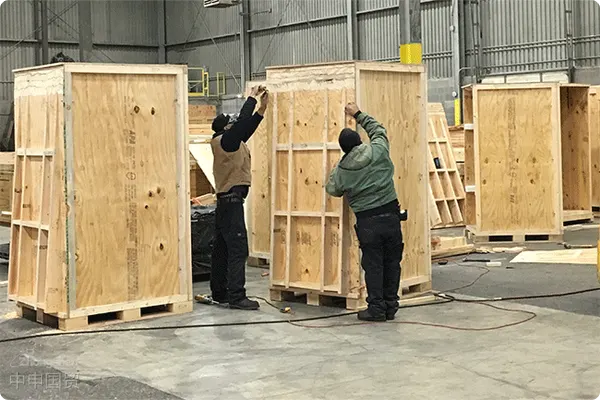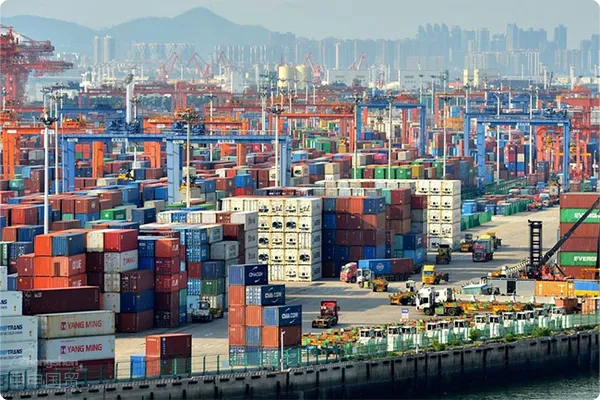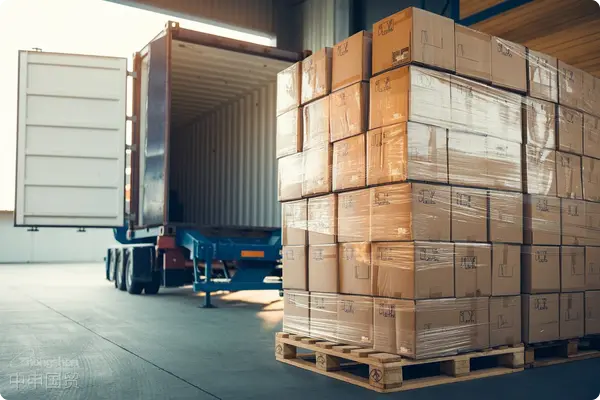- Shanghai Zhongshen International Trade Co., Ltd. - Two decades of trade agency expertise.
- Service Hotline: 139 1787 2118
Wooden packaging is widely used in international trade due to its advantages such as low cost, easy processing, and environmental friendliness. However, wooden packaging materials may carry organisms such as pests. Therefore, during the export process, the treatment and marking of wooden packaging are particularly crucial. To ensure compliance with international standards and smooth customs inspection, it is very important to understand the specific requirements for exporting wooden packaging. Next, we will answer relevant questions in detail.
I. What is wooden packaging?
Wooden packaging refers to various wooden materials used to carry, package, cushion, support, and reinforce goods, such as wooden boxes, wooden crates, and wooden pallets. These materials are common and widely used in international trade, mainly to protect and support goods. However, it should be noted that deeply processed artificial wood materials (such as plywood, particleboard) and wooden materials with a thickness less than or equal to 6 mm (such as sawdust, wood wool) do not fall within the scope of wooden packaging subject to quarantine.

II. How to obtain qualified wooden packaging?
To meet export requirements, exporters should purchase wooden packaging from enterprises with the qualification for mark application and request a certificate of pest - free treatment of wooden packaging. Qualified wooden packaging not only helps improve the customs clearance efficiency of goods but also reduces the risk of trade disputes caused by non - compliance. Only enterprises with customs - approved mark - application qualifications can treat and apply the IPPC mark to exported wooden packaging. These enterprises have undergone strict qualification reviews to ensure their qualified capabilities in pest - free treatment. The list of enterprises with mark - application qualifications in China has been published on the official website of the General Administration of Customs. Exporters can find suitable suppliers by querying the list.
How to choose a suitable supplier? When choosing a supplier, exporters should pay attention to whether the supplier has the customs - approved mark - application qualification and can provide qualified certificates that meet the requirements. In addition, it is recommended that exporters maintain close communication with suppliers, clarify the treatment method and delivery time of wooden packaging to ensure the smooth progress of the entire export process. The contract should clearly stipulate the quality requirements of the packaging, the pest - free treatment method, and the responsibility for providing a qualified certificate, so that the responsible party can be effectively traced in case of problems.
IPPC標(biāo)識:
The IPPC (International Plant Protection Convention) mark is an important symbol of exported wooden packaging, used to prove that the wooden packaging has undergone pest - free treatment. In the mark, “CN” represents China, “00000” is composed of a 2 - digit customs area code and a 3 - digit mark - application enterprise number, and “YY” represents the code of the pest - free treatment method, for example, “HT” represents heat treatment. The existence of the IPPC mark is not only an indication of compliance but also a prerequisite for the goods to pass the customs quarantine of the destination country smoothly. Therefore, exporters should ensure that the IPPC mark on each wooden packaging is clear, complete, and meets the standard requirements to avoid troubles and delays in customs clearance.
Importance of the mark: Any blurred, unclear, or non - standard mark may lead to the customs seizing the goods or refusing customs clearance. Therefore, when purchasing wooden packaging, exporters should check the mark to ensure that its position, content, and size meet the requirements. In addition, the mark must be permanently attached to the packaging material and cannot be easily erased or damaged to ensure the effectiveness of the mark during transportation, loading and unloading, and storage.
III. Quarantine requirements for exporting wooden packaging
In order to prevent the spread of harmful organisms such as pine wood nematodes, long - horned beetles, and termites through wooden packaging internationally, countries around the world have adopted the international standard for quarantine measures for wooden packaging. As a member of the WTO, China is also obliged to follow this standard to effectively control the risks of wooden packaging and reduce the inspection workload during customs clearance. The following are common quarantine treatment methods:
Heat treatment (HT)
Heat the wood in a sealed environment so that the core temperature of the wood reaches at least 56°C and lasts for more than 30 minutes. This method can effectively kill pests and microorganisms in the wood.
Fumigation treatment (MB or SF)
Fumigate the wooden packaging with methyl bromide (MB) or sulfuryl fluoride (SF), and it is required to fumigate for a certain period at a specific temperature. This method can kill harmful organisms parasitic in the wood, but special care should be taken when using methyl bromide because it is highly destructive to the environment.
Dielectric heating treatment (DH)
By using dielectric heating methods such as microwaves, the surface temperature of the wood reaches above 60°C within 30 minutes and is maintained for at least one minute. This is a relatively fast way to kill insects and is suitable for some specific types of wooden packaging.
Sulfuryl fluoride fumigation treatment (SF)
The fumigation temperature is required to be not lower than 20°C, and the fumigation time is usually 48 hours or 24 hours. Sulfuryl fluoride cannot be used for fumigation treatment of wooden packaging with a minimum cross - section exceeding 20 cm or a moisture content greater than 75%.
IV. Precautions for exporting wooden packaging
Obtain a qualified certificate
Export enterprises should require mark - application enterprises to provide a certificate of pest - free treatment of wooden packaging to prove that the packaging meets international quarantine requirements and ensure the smooth customs clearance of goods.
Understand the quarantine requirements of the destination country
Exporters need to understand the quarantine requirements for wooden packaging of the destination country in advance, because different countries may have different requirements for wooden packaging. Fully understanding and following these requirements can avoid customs clearance delays or goods being returned due to non - compliance.
Do not use fake certificates or marks
Do not attempt to use fake certificates, marks, etc. to evade customs supervision. Otherwise, it will not only affect the reputation of the enterprise but may also face fines or even more serious legal consequences.
V. Summary
Wooden packaging plays an important role in international trade. However, due to the possibility of wood carrying pests, the compliance of its treatment and marking is of great importance. Export enterprises should ensure that the pest - free treatment of wooden packaging is qualified, obtain corresponding certificates, and strictly comply with the quarantine requirements of the target market to ensure that the goods pass the customs inspection smoothly.
Related Recommendations
? 2025. All Rights Reserved. 滬ICP備2023007705號-2  PSB Record: Shanghai No.31011502009912
PSB Record: Shanghai No.31011502009912










